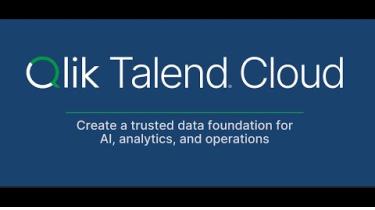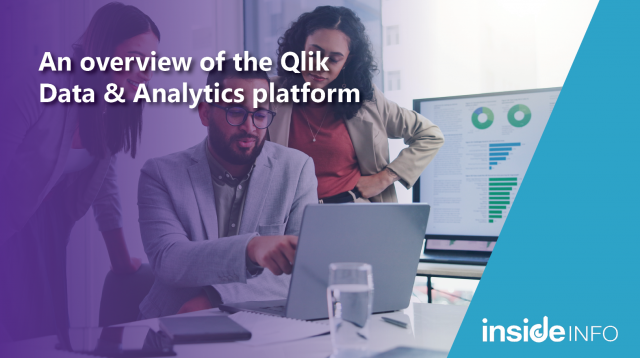
The gap between data availability and data accessibility is one of the biggest challenges businesses face. Many still operate under traditional data governance models where insights are controlled by IT or data science teams, creating silos that hinder agility.
This approach is no longer viable. The future belongs to businesses that empower their teams with data tools that are easy to use, intuitive, and accessible - regardless of technical expertise.
The organisations that thrive are those that put data in the hands of their people, from frontline staff to executives, empowering them with real-time insights to drive decision-making.
This shift, known as data democratisation, is about removing the barriers that limit access to data and enabling individuals across all departments to explore and leverage information independently. By fostering a culture of self-service analytics, businesses can unlock new levels of innovation, agility and resilience.
According to Gartner, organisations that successfully adopt a data-sharing culture will outperform their peers on most business value metrics. Yet today, only 24% of employees feel they have access to the data they need to do their jobs effectively.
So, how do you eliminate decision-making bottlenecks in a world of constant disruption?
How Qlik enables self-service analytics for non-technical users
Self-service analytics platforms like Qlik are designed to break down the traditional barriers to data access. Instead of requiring specialised skills in SQL, Python, or advanced BI tools, Qlik provides an intuitive, user-friendly interface that allows employees across all levels of an organisation to explore data independently.
Here’s how Qlik makes analytics accessible:
- No-code/low-code interfaces – Users can build dashboards, visualisations, and reports without needing deep technical expertise.
- Natural language processing – Employees can query data in plain language, similar to a Google search, to retrieve insights instantly.
- AI-enhanced insights – Automated recommendations highlight trends, anomalies, and key takeaways, making data interpretation easier.
- Unified data access – Employees can pull from multiple sources - ERP, CRM, finance, supply chain, and HR systems - without needing IT intervention.
These capabilities transform employees from passive consumers of data into active problem-solvers, enabling faster, more informed decision-making across the business.
The benefits of data democratisation for organisational success
When organisations embrace data democratisation, they empower their employees to be more engaged, proactive, and aligned with business goals. Here’s what happens when data is put in the hands of the people who need it most:
- Faster, more informed decision-making
Employees don’t have to wait for monthly reports or rely on IT to generate insights, they can act on real-time data to make immediate, informed decisions. This agility is particularly critical in industries where conditions change rapidly, such as retail, healthcare, and financial services.
Example: A major logistics company implemented self-service analytics for warehouse managers, allowing them to monitor shipping delays in real time. As a result, they reduced delivery time fluctuations by 18% and improved customer satisfaction.
- Breaking down silos across departments
Many organisations struggle with fragmented data, where different departments work in isolation, each relying on their own datasets. Data democratisation ensures that information is shared across teams, fostering greater collaboration.
Example: A global retailer unified its sales, inventory, and marketing data, giving regional managers access to live dashboards. This alignment helped reduce inventory overstock by 22% and improved promotion effectiveness.
- Encouraging innovation and continuous improvement
When employees at all levels can experiment with data, test hypotheses, and explore insights without constraints, innovation flourishes. Studies show that businesses leveraging self-service analytics see a 20-25% boost in operational efficiency (Source: McKinsey, 2024).
Example: A financial services firm enabled its customer service teams with self-service analytics to identify pain points. This led to the development of a new digital support channel, reducing inbound call volumes by 35%.
- Empowering frontline workers with insights
Data shouldn’t just be available to executives; it should be accessible to those closest to customers and operations. When frontline employees have data at their fingertips, they can drive tangible improvements.
Example: A healthcare network equipped nurses and administrators with analytics dashboards to optimise patient flow. This reduced patient wait times by 20% and improved allocation efficiency.
Overcoming organisational challenges to data democratisation
While the benefits are clear, the road to true data democratisation is not without challenges. Many organisations face:
- Cultural resistance to change
Employees who are used to centralised reporting may hesitate to adopt self-service analytics tools. Encouraging adoption requires leadership buy-in, clear incentives, and an organisation-wide data literacy program.
- Data governance and security risks
With greater data access comes a heightened need for governance. Organisations must balance accessibility with security to prevent data misuse, inaccuracies, or breaches.
- Lack of training and support
A self-service tool is only as effective as its users. If employees struggle to navigate analytics platforms, adoption rates will remain low.
The Future: Empowered Teams, Smarter Decisions
The future belongs to organisations that recognise data as a shared asset, not a guarded resource. By embracing data democratisation, businesses foster a culture of informed decision-making, innovation, and agility - giving them a competitive edge.
The question is no longer whether businesses should empower employees with data, but how quickly they can make it happen.




